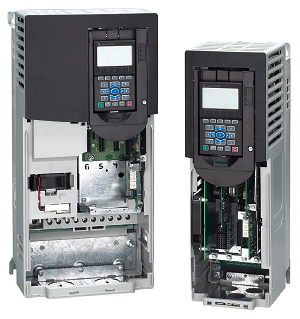AC drives `more flexible than their rivals`
![]() Rockwell Automation has announced a new range of flexible AC drives that, it asserts, offer more control flexibility and hardware options that any other drives in their class. The Allen-Bradley PowerFlex 755 drives, spanning ratings from 7.5–250kW at 400/480V AC or 540/650V DC, are the first in the new “performance-oriented” 750 series that will eventually expand to ratings above 1MW.
Rockwell Automation has announced a new range of flexible AC drives that, it asserts, offer more control flexibility and hardware options that any other drives in their class. The Allen-Bradley PowerFlex 755 drives, spanning ratings from 7.5–250kW at 400/480V AC or 540/650V DC, are the first in the new “performance-oriented” 750 series that will eventually expand to ratings above 1MW.

The drives (above) offer torque, speed and position control, and have five option slots that accept combinations of control, communications, feedback, I/O, safety and auxiliary power control cards.
An embedded DeviceLogix controller can combine I/O with local logic functions to determine the drive’s behaviour. By processing routines on-board, the control engine reduces the drive’s dependency on network throughput, and shortens reaction times. If network or PLC control is lost, the on-board intelligence can assume control. The same software is used to program both the drive and DeviceLogix functions.
The drives offer two levels of safety. A basic Safe Torque Off option uses an external safety relay to prevent the drive from restarting after a safety circuit is tripped. A more sophisticated Speed Monitor Safety option uses an on-board safety relay and uses devices connected to the drive to provide a variety of other safety functions such as safe stop, safe limited and maximum speed, and safe maximum acceleration.
The safe speed option can, for example, be used to reduce the speed of an application and monitor it so that jams can be removed and other maintenance performed without stopping a machine completely.
Preventative diagnostics built into the drives can keep track of the operating hours of on-board fans, the number of I/O relay cycles performed, and the number of rotations completed by the attached motor’s bearings, and warn when maintenance is due.
Ethernet/IP communications are embedded, allowing users to configure, control and collect drive data via a network. The drives’ power stages are up to 10% smaller than their predecessors.





